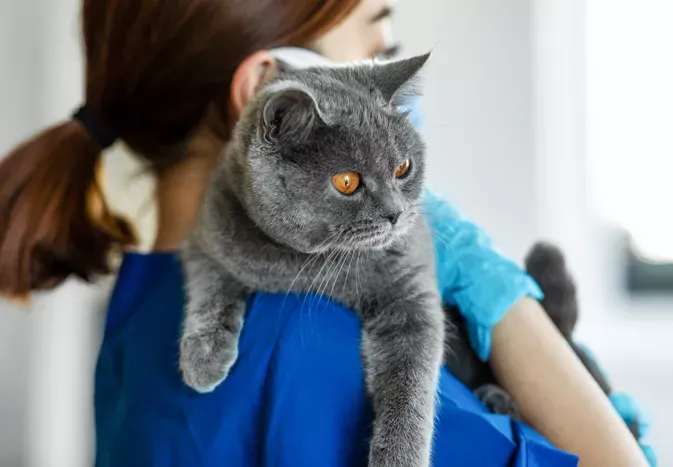9 Things to Include in a Cat First Aid Kit
Updated on 04/26/24

9 Essential Items for Your Cat's First Aid Kit: Be Prepared for Emergencies
As a responsible cat owner, you want to be prepared for any unexpected health concerns that may arise. Having a well-stocked first aid kit is a crucial element in ensuring your feline companion's well-being. Here's a comprehensive guide to assembling the 9 essential items for your cat's first aid kit:
1. Gauze Pads and Adhesive Tape:
* Purpose: To stop bleeding from minor wounds.
* Example: A small cut or scrape that needs temporary bandaging.
2. Antiseptic Solution:
* Purpose: To clean and disinfect wounds, preventing infection.
* Example: A solution of chlorhexidine or hydrogen peroxide can be used to cleanse open wounds.
3. Sterile Saline:
* Purpose: To flush out wounds or clean eyes and ears.
* Example: A sterile saline solution can be used to flush out a wound to remove debris or dirt.
4. Antibiotic Ointment:
* Purpose: To prevent or treat infections in minor wounds.
* Example: A triple antibiotic ointment can be applied to small cuts or abrasions to reduce the risk of infection.
5. Elizabethan Collar:
* Purpose: To prevent cats from scratching or licking wounds.
* Example: If your cat has surgery, an Elizabethan collar will keep them from removing stitches or causing further injury.
6. Nail Clippers:
* Purpose: To trim overgrown nails that can cause discomfort or injury.
* Example: Regularly trimming your cat's nails will prevent them from snagging or tearing, which can lead to pain and infection.
7. Tweezers:
* Purpose: To remove splinters, ticks, or other foreign objects.
* Example: If your cat gets a splinter, tweezers can be used to carefully extract it without causing further damage.
8. Thermometer:
* Purpose: To monitor body temperature, which can indicate illness.
* Example: A digital thermometer can be used to check your cat's temperature if they appear lethargic or unwell.
9. Emergency Contact Information:
* Purpose: To have immediate access to veterinary and emergency contacts.
* Example: Keep a list of your veterinarian's phone number, emergency vet clinics, and pet insurance information in case of emergencies.
Additional Tips for Assembling Your Kit:
* Choose quality materials specifically designed for cats.
* Inspect and replenish your kit regularly to ensure items are fresh and functional.
* Store your kit in an easily accessible location, away from children and pets.
* Consider consulting with your veterinarian for personalized recommendations based on your cat's specific needs.
Remember, a first aid kit is only part of responsible pet ownership. Regular veterinary checkups and a healthy lifestyle are essential for maintaining your cat's well-being. By being prepared for emergencies, you can provide peace of mind and prompt care for your feline companion.
Explore More Pets

Cat Behavior Problems
How to Stop Aggression in Kittens

Long-Haired Cat Breeds
Siberian Cat: Breed Profile, Characteristics, & Care

Cat Behavior Problems
How to Stop Kittens From Scratching and Biting

Long-Haired Cat Breeds
Turkish Angora: Cat Breed Profile, Characteristics & Care

Basic Training
How to Socialize Your Kitten

Short-Haired Cat Breeds
Cute Pictures & Facts About Calico Cats & Kittens

Litter Box Training
Training Your Kitten to Use the Litter Box

Long-Haired Cat Breeds
10 Fun Facts About White Cats